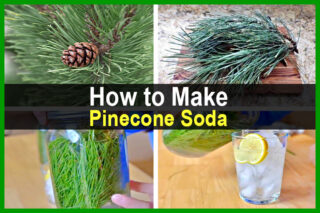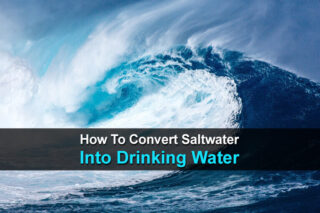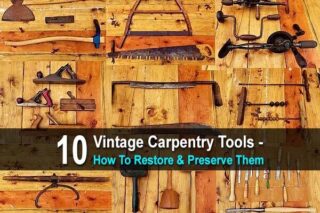Estimated reading time: 10 minutes
Many people have said that if we were ever hit by an EMP, we’d be back living in the 1800s. There are just two problems with that: The first is that we don’t have the tools they had, and the second is that we don’t really know how to use them. So, if we’re going to be living like we’re in the 1800s, we’re probably going to be doing a really poor job.
Take something simple, like a washboard. Do you really know how to wash clothes with a washboard? Have you ever done it? The only thing I can tell you for sure is that using one would be quite a workout for the arms. I’d also be concerned about damaging my clothes, especially on a metal one that might not be as smooth as it needs to be.
How about a wood cooking stove? That should be simple, right? After all, we all cook on barbecue grills. But there’s a world of difference cooking chicken on a barbecue grill and making flapjacks in a cast-iron pan on a wood-burning stove.
Baking would probably be even worse, as it would be tricky maintaining the oven temperature. I’m sure there are a lot of tricks involved in working with that stove, which none of us have ever thought of. Just cooking with cast-iron pots and pans takes some time to learn.
Yet if anything happens to our electric grid, these appliances, and many more, are going to become the norm once again. You and I are going to have to take a crash course in using them, assuming that we can even find them. That might actually be the bigger problem. Most are available, but they’re not the kind of thing you find in most people’s homes—not even most preppers’ homes.
It seems to me that it might be worthwhile digging up a few of these treasures while they can still be found. Not only that, it's also important to take some time to learn how to use them properly. Consider it just one more part of your survival training.
Want to save this post for later? Click Here to Pin It On Pinterest!
1. Fireplace Crane
Cooking over an open fire has a certain romantic appeal, at least when we’re out camping. But cooking over a fire at home is another thing altogether, especially trying to do it in the fireplace. That’s where the fireplace crane comes in.
This is a swing-out metal hook that’s attached to the side of the fireplace. It provides a place to hang a pot over the fire for cooking. Since it can swing outward, it allows the cook to add ingredients, stir, sample, and ultimately serve the food without the risk of putting their hands over the fire itself.
You can still find fireplace cranes for sale, even through such ordinary places as home improvement centers. Just be sure to anchor it well when installing it, and avoid any sort of plastic anchors. The cantilevered weight of a full pot will put a lot of strain on the fasteners, especially the upper one.
2. Dutch Oven
Buy a set of pots and pans and you’re likely to be told that it contains a Dutch Oven. But what you’re actually going to get is a 5-quart enameled stock pot, made out of fairly thin aluminum or stainless steel. If you tried to bake in that, not only would you ruin the pot, you’d probably end up ruining whatever you were trying to bake.
A real Dutch Oven is a cast-iron pot that’s big enough to fit a pie tin into. But the important difference is that it will have short legs on it and what looks like an inverted lid, with a rim around the edge.
The legs are there so that it will sit level, when placed in the coals of a fire. The lid is specially designed so that more coals can be piled on top, surrounding the food inside with heat.
That’s really what makes it an oven. Being made of cast iron is an advantage too as the pot absorbs heat and distributes it more evenly than a thinner metal pot would.
Fortunately, it’s not all that hard to find an actual Dutch Oven, although they are a bit more expensive than those enameled ones.
3. Wood-Burning Cookstove
Many of us preppers have wood-burning stoves in our homes for heat; but that’s not the same as having a wood-burning cookstove. Many wood-burning stoves are made in a way that it would be impossible to cook on them.
If we want to be able to cook on something other than a barbecue grill or a fire pit, then we need to consider investing in a wood-burning cookstove. They’re not cheap by any means, but they are available.
In the Old West, owning a wood-burning cookstove was a sign of a family being in good shape, financially speaking. Poorer families only had the option of cooking over the fire.
Adding a wood-burning cook stove to the home not only made the woman’s work much easier, but also provided an additional source of heat for the home, as they would also have a fireplace or wood-burning stove for heat. As with any other wood-burning stove, a wood-burning cook stove radiates much more heat than a comparable sized fireplace.
4. Wood-Fired Water Heater
A great addition to a wood-burning cookstove is a wood-fired hot water heater. The cookstoves normally didn’t come with these pre-installed; but the manufacturers of those wood-burning cookstoves offered them as an add-in.
The water heater consisted of a cylindrical container, which held about five gallons of water and was mounted in the top part of the fire box. Five gallons may not seem like a lot of hot water; but when brought to boiling, it’s enough to warm up the water for a bath. You’ve got to remember that our hot water heaters only get up to about 140°F, not the 212°F that water boils at.
Most of the wood-fired hot water heaters for sale today aren’t this type, but rather stand-alone units. However, it is still possible to get the old-fashioned type from Lehman’s.
5. Meat Grinder
Ground beef is a probably the most common way that we use beef today. There’s a whole section in the grocery store’s meat case, just for ground beef. Yet the idea of grinding our own beef is foreign to most of us, we expect the butcher to do it for us.
One of the main purposes of making ground beef or grinding any other sort of meat is to turn meat that is tough or otherwise not very usable into usable meat. This was done for making cured meats, then sausage and finally for making the American favorite, the hamburger.
So, there’s actually a lot you can do with a meat grinder, including making your own sausage. Fortunately, they’re not hard to find and a quality manual one can be purchased for under $150.
6. Meat Hammer
Speaking of making tough meat edible, this is a real concern with game meat, which tends to be tougher than farm-raised meat. The easy solution is to use a meat hammer on it, something that used to be common, but for some reason isn’t in most people’s kitchens anymore.
The meat hammer is like a metal mallet, with a waffled surface on one end and a smooth surface other. Meat is placed on a cutting board and hit all over with the hammer, which breaks down muscle fibers, making it more tender once cooked.
7. Apple Peeler/Corer
Apples are a very versatile food, but using them for baking usually requires peeling and coring the apples. That’s tedious work, especially when you’re talking about a bushel or more of apples. Maybe that’s part of the reason why so few people make their own applesauce or apple butter.
Apparently our great-grandparents though it was boring too, as one of them came up with a rather simple device that takes care of both jobs in less than a minute.
Apple peeler/corers or corer/peelers (whichever you prefer) are readily available and reasonably priced. And since they're usually under $25, I don’t know why anyone would try to do the job manually.
8. Ice Box
The ice box was the predecessor to the electric refrigerator. It was an insulated cabinet, with several compartments; one of which was for holding a block of ice. The closer the food was to the ice, the colder it would be kept.
The big problem with trying to use ice boxes today, or even in the wake of a TEOTWAWKI event, is that we no longer have the infrastructure in place.
If you’ve ever seen the movie Frozen, then you probably remember the opening scene where the ice men are out on the frozen lake, cutting blocks of ice to haul to the ice house. That would be kept till the warmer months, when those same men would go door-to-door, selling ice for use in ice boxes.
To try and use ice boxes today, you’d need to build your own ice house and harvest your own ice. It would be best if that ice house were underground, as it is always cooler there. Even so, you’d need to cut a lot more ice than you expect to need and insulate it well to help slow melting.
Old fashioned ice boxes are rare these days, but you can still find them on eBay or Etsy.
9. Oil Lamps
One of the great inventions of all time was the oil lamp. We really don’t know how far back they go, but there have been examples of oil lamps which have been estimated to be 10,000 to 15,000 years old. Considering that just about any oil will work in a lamp, those early oil lamps probably burned animal fat, rather than mineral oil.
Modern lamps are much more efficient than those early clay ones, and they mostly use mineral oil for fuel. But they will still burn any oil that will wick, making them very versatile. The glass chimney helps keep them from blowing out and if the lamp is placed against a wall, adding a reflector behind it helps get more of the light to where it is needed.
You can find oil-burning lamps for just about any price, with the low end being under $10.
10. Washboard
I mentioned this in the opening of this article, but it bears repeating. The washboard may not seem like a necessity, but they make washing clothes by hand much easier. The basic idea is that the ridged surface of the washboard pushes the soapy water through the fibers of the fabric when clothes are rubbed against it, thereby carrying away dirt.
If you’re going to get a washboard, you’re better off with a glass one, as the design of the surface texture works better. They’re a bit more expensive than metal, but still under $50. Besides, glass can’t rust.
11. Clothes Wringer
If you’ve ever seen one of the old tub washing machines, then you’ve seen a wringer attached to the side. This was much easier than trying to wring clothes out by hand and did a better job to boot. That makes them worth using, even if only used occasionally.
Surprisingly, these wringers are still available today, although they are a bit hard to find. Plan on spending up to $200 for one.
12. Cast-iron Clothes Iron
Ok, we might not actually need one of these in a survival situation; but as we try to bring some semblance of society back after a TEOTWAWKI event, ironing clothes may become important again. The old cast-iron clothes irons might not have been easy to use, but they did get the job done if you knew how to use them.
The trick to these is that you have to sprinkle the fabric with water, as the iron doesn’t have a built-in steam function. Once that is done, the iron turns that water to steam, spreading it through the fabric and then drying the fabric nice and flat. The only ones of these you’re likely to find today are either antiques or reproductions, but they should still work.
Like this post? Don't Forget to Pin It On Pinterest!
You May Also Like:













You have not mention even one item I have not seen being used or used myself. When I was a young wife (I will be married 54 years this year) and my wonderful mother in Love taught me how to use just about all of those items. I have been taught how to use fire crane so at 71 I think I am set for having to use those items.
You will be busier than ever identifying the old items brought for possible use and teaching today’s girls (and their mothers) how to use them.
I am 80 yrs.pld.I am glad I got to watch my grandmother use all of these things. and have used them myself.
i’ve got no;6 and 7 but nothing else, so i have my work cut out for me to find these things.
Another use for the irons is that when people get lice, etc., (and some will) ironing kills the lice. That’s one of the first reasons for using hot irons on sheets and clothing.